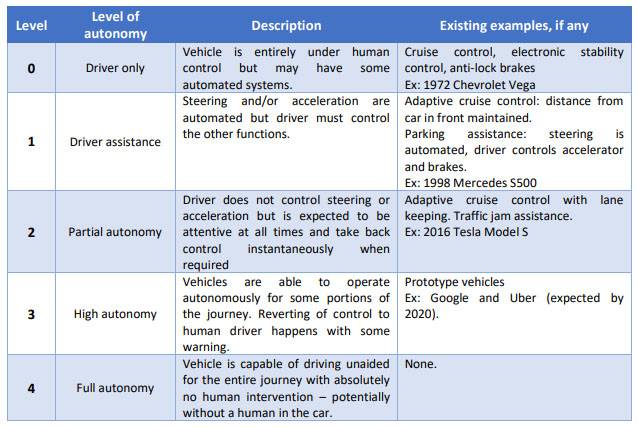At least one headline, either in newspapers or news channels, is often packed with stories of self-driving vehicles. Driverless cars, as most of us know, have also sparked Hollywood’s imagination for the last few decades!
The first autonomous cars appeared in the 1980s, with Carnegie Mellon University’s Navlab and ALV projects in 1984, and Mercedes-Benz and Bundeswehr University Munich’s Eureka Prometheus Project in 1987.Since then, however, limited research had been observed until 2005.
SO WHAT’S NEW? It’s surprising to know that, the concept of autonomous vehicles is not entirely new, if we drive down history lane a bit. As early as 1925, Houdina Radio Control demonstrated a radiocontrolled driverless car, the “Linrrican Wonder” on New York City streets, traveling up Broadway and down Fifth Avenue through the thick of the traffic. However, more recent years have seen significant progress towards the goal of autonomous and unmanned vehicles, which are equipped with a vast variety of technologies, including, but not limited to, increasingly sophisticated artificial intelligence (AI) and capabilities of robotics. These technological advancements allow society to fundamentally reconsider the vehicles available to users and the infrastructure that they are part of.
The first known truly autonomous car — which could process images of the road ahead — was unveiled in 1977 by S. Tsugawa and his colleagues at Japan’s Tsukuba Mechanical Engineering Laboratory. The first self-sufficient and truly autonomous cars appeared in the 1980s, with Carnegie Mellon University’s Navlab and ALV projects in 1984, and Mercedes-Benz and Bundeswehr University Munich’s Eureka Prometheus Project in 1987. However, limited research had been observed since, until 2005.
Research on autonomous vehicles in countries like the United States, Europe and Japan is now accelerating; these countries have now even begun testing prototypes of autonomous cars on public roads. Autonomous vehicle technologies are being incorporated in vehicles after steady research, and at a brisk pace, so as to enable these vehicles to arrive in the market quickly. While the use of autonomous vehicles provides benefits such as improved safety, reduced congestion and lower stress for car occupants challenges such as public’s expectations regarding safety, legal responsibility and more importantly, privacy, need to be addressed.
Many major automotive manufacturers, including General Motors, Ford, Mercedes Benz, Volkswagen, Audi, Nissan, Toyota, BMW and Volvo, have been testing driverless car systems. BMW in particular, has been testing driverless systems since around 2005; while in 2010, Audi sent a driverless Audi TTS to the top of Pike’s Peak at close to race speeds. Available in 2013, the 2014 Mercedes S-Class has options for autonomous steering, lane keeping, acceleration/braking, parking, accident avoidance and driver fatigue detection in both, city and highway traffic speeds of up to 124 miles (200 km) per hour. In April 2015, a car designed by Delphi Automotive became the first automated vehicle to complete a coast-to-coast journey across North America- it traveled from San Francisco to New York, being under computer control for 99% of the total distance. The recent Model 3 announcement by Tesla took the industry by storm and saw Tesla collecting a whopping $276 million in pre-orders in a matter of days.

